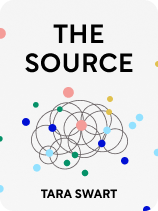

This article is an excerpt from the Shortform book guide to "The Source" by Tara Swart. Shortform has the world's best summaries and analyses of books you should be reading.
Like this article? Sign up for a free trial here.
How important is emotional intelligence? How can you build emotional intelligence?
Emotional intelligence is one of the six modes of thinking, according to The Source by Tara Swart. Swart goes as far as to say it’s the most important thinking mode and has a strong effect on the brain.
Discover how to build emotional intelligence to experience its full benefits.
Developing Emotional Intelligence
According to Swart, the most important mode of thinking to strengthen is emotional intelligence because it’s fundamental to all the other functions of the brain, so it has the strongest effect on the other five modes of thinking. It’s also the mode that people tend to have the hardest time with, because society tends to paint emotions and logic as polar opposites, suggesting that emotions are bad and logic is good.
(Shortform note: Some experts suggest that society exalts logic over emotion because of the prevailing misconception that men are naturally more logical and women are more emotional. This view is often used to invalidate women’s opinions as irrational and leads us to socialize boys to avoid or suppress their emotions, which can negatively impact their mental and physical health in adulthood.)
Because emotions come from the limbic system, which is one of the most primal parts of the brain, we often feel ruled by our emotions. But Swart explains that you can learn how to build emotional intelligence so you can control your emotions and use them to your advantage in maximizing your brain’s potential. Specifically, while we may not be able to determine what emotions we feel at any given moment, we can control our emotional response to anything.
(Shortform note: In Emotional Intelligence, Daniel Goleman suggests that people tend to handle their emotions in one of two ways: They either feel engulfed in their emotions and unable to control themselves, or they are overly accepting of their emotions and feel they can’t or don’t need to change them. Neither of these responses reflects emotional intelligence, and Swart and Goleman share the view that there’s a third way of handling emotions—taking agency over them in order to use them to your advantage.)
Control Your Emotional Response
Swart describes eight basic emotions that fit into three categories. Five of the basic emotions are survival emotions: fear, anger, disgust, shame, and sadness. Two of the basic emotions are attachment emotions: love/trust and joy/excitement.
Survival and attachment are different types of emotional response states. However, the final emotion is what Swart calls a potentiator emotion: surprise. Surprise allows you to switch between the two emotional response states, meaning you can use surprise to take yourself out of a survival response state and put yourself into an attachment response state (or vice versa). Essentially, by exposing your brain to something novel and unexpected, you can “shock” yourself into a positive emotional response (attachment). This, Swart argues, is how you can master your emotions.
For example, if you’re arguing with someone whose ideas are very different from your own and find yourself getting angry, try taking on the other person’s perspective. Trying out this new outlook exposes you to novel emotions and thoughts, which can surprise you out of your state of anger and into an attachment response state.
| Other Theories on the Basic Emotions, and Surprise Versus Startle Other experts identify different basic emotions than the eight that Swart lists. Psychologist Paul Ekman proposed that there were six basic emotions: anger, disgust, fear, happiness, sadness, and surprise. Another psychologist, Robert Plutchik, identified eight basic emotions, but the ones he identified don’t map well onto Swart’s: joy, sadness, anger, fear, trust, distrust, surprise, and anticipation. All three of these theories (Swart’s, Ekman’s, and Plutchik’s) include joy (or happiness), sadness, fear, and anger, but there’s less agreement when it comes to disgust, shame, love (or trust), and surprise. Some research suggests that the four emotions shared by these three theories are the only four basic emotions, and that surprise and fear are just different manifestations of the same emotion (as are anger and disgust). We should also distinguish between surprise and the startle response, which are often used synonymously. Surprise is the emotion that results from an incongruity between expectations and reality, but the startle response is an automatic physiological reaction to a perceived threat that activates the brain’s fight or flight stress response. Surprise that’s not accompanied by the startle response can allow you to guide yourself into a positive or negative emotional response state, but being startled will likely make you feel worse because it triggers your body’s stress response. To best utilize surprise as a potentiator emotion, use stimuli that your brain won’t perceive as a threat, such as another person’s viewpoint or a fun new experience. |
To switch between your emotional response states, you need to be aware of and able to identify what you’re feeling, which Swart refers to as emotional literacy. She recommends that you make a conscious effort to note what you’re feeling when an intense emotion comes up, and that you say the name of the emotion out loud to reduce its power over you.
(Shortform note: While Swart recommends increasing your emotional literacy and being more aware of the eight basic emotions, neuroscientist Lisa Feldman Barrett suggests honing emotional granularity, or your ability to identify more complex emotions (such as insecurity, gratitude, boredom, or envy). Barrett says that being more specific in labeling your emotions can make it easier to regulate them and suggests that writing your feelings down and reflecting on them deeply can help you develop this skill. Barrett’s and Swart’s tips may be particularly helpful for people with alexithymia, which is a difficulty in understanding and expressing one’s emotions. This phenomenon is common in autistic people, people with ADHD, and people with PTSD.)
However, Swart says that sometimes emotions can feel so overpowering in the moment that we can’t easily switch to a different response state. If an emotion feels overwhelming, she recommends that you imagine yourself holding up a big stop sign to yourself as a cue to let go of that emotion rather than acting on it. She also recommends exercise and meditation as a way to better connect with your emotions. (Shortform note: Remember that the stop sign visualization is supposed to prompt you to avoid acting on your feelings, not to suppress the emotion itself. While suppressing emotions can make you appear less emotional in the moment, research shows that it doesn’t actually make the emotion go away, and it can negatively impact your physical and mental health.)

———End of Preview———
Like what you just read? Read the rest of the world's best book summary and analysis of Tara Swart's "The Source" at Shortform.
Here's what you'll find in our full The Source summary:
- How to get the most out of your brain by tapping into its immense power
- How to use the major principles of the Law of Attraction
- The four-step process to change your life






